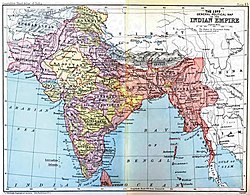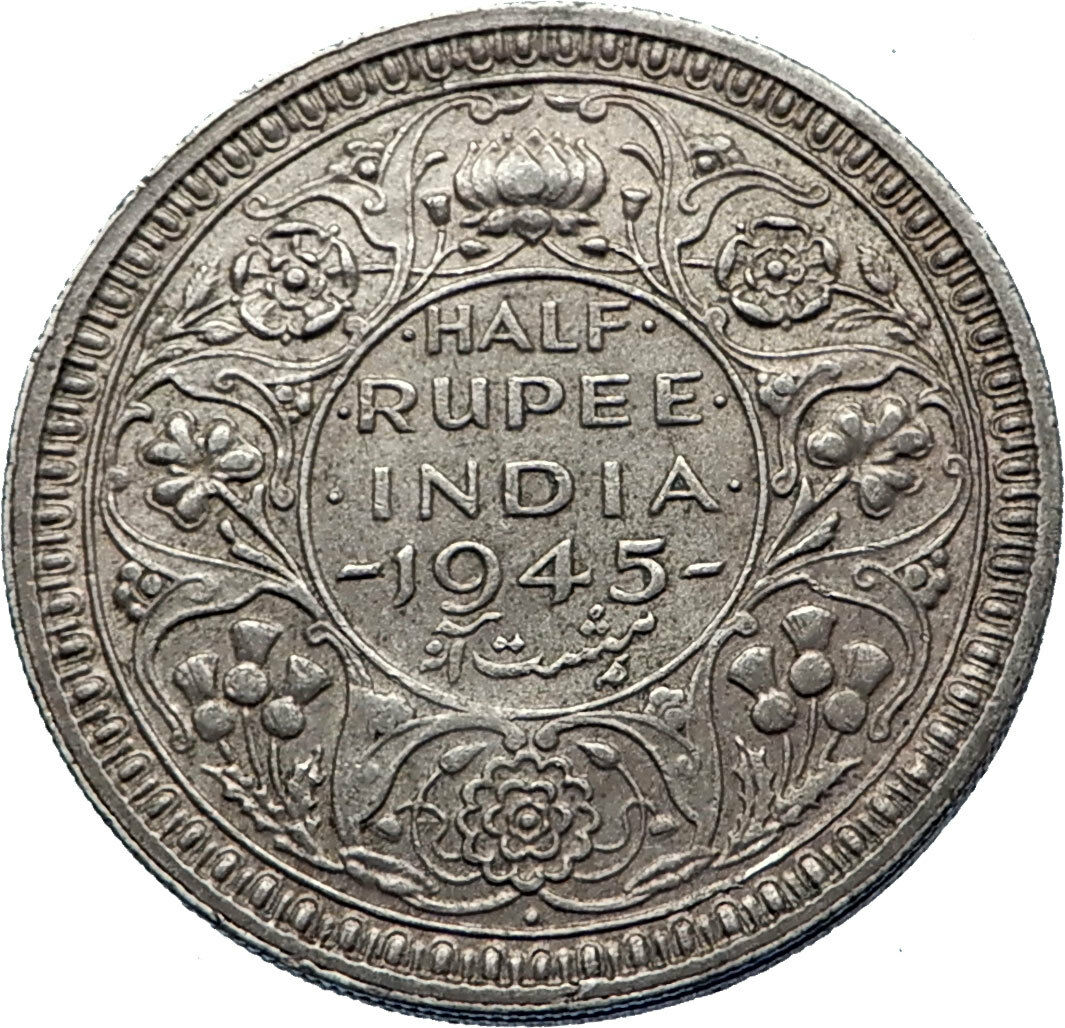|
India – Princely States
1928 VS 1985 Silver 1 Rupee 30 mm (10.82 grams) 0.500 Silver
Reference: KM# 22.1
Thin characters, Chitarkot/Udaipur
Dosti Lundhun, Panoramic city view
You are bidding on the exact item pictured, provided with a Certificate of Authenticity and Lifetime Guarantee of Authenticity.
A princely state, also called native state (legally, under the British) or Indian state (for those states on the subcontinent), was a vassal state under a local or regional ruler in a subsidiary alliance with the British Raj. Though the history of the princely states of the subcontinent dates from at least the classical period of Indian history, the predominant usage of the term princely state specifically refers to a semi-sovereign principality on the Indian subcontinent during the British Raj that was not directly governed by the British, but rather by a local ruler, subject to a form of indirect rule on some matters. In actual fact, the imprecise doctrine of paramountcy allowed the government of British India to interfere in the internal affairs of princely states and edict laws that applied to all of India when it deemed it necessary.
 At the time of the British withdrawal, 565 princely states were officially recognised in the Indian subcontinent, apart from thousands of thakurs, taluqdars, zamindaris and jagirs. In 1947, princely states covered 48% of area of pre-Independent India and constituted 28% of its population. The most important states had their own British Political Residencies: Hyderabad, Mysore and Travancore in the South followed by Jammu and Kashmir and Sikkim in the Himalayas, and Indore in Central India. The most prominent among those – roughly a quarter of the total – had the status of a salute state, one whose ruler was entitled to a set number of gun salutes on ceremonial occasions. At the time of the British withdrawal, 565 princely states were officially recognised in the Indian subcontinent, apart from thousands of thakurs, taluqdars, zamindaris and jagirs. In 1947, princely states covered 48% of area of pre-Independent India and constituted 28% of its population. The most important states had their own British Political Residencies: Hyderabad, Mysore and Travancore in the South followed by Jammu and Kashmir and Sikkim in the Himalayas, and Indore in Central India. The most prominent among those – roughly a quarter of the total – had the status of a salute state, one whose ruler was entitled to a set number of gun salutes on ceremonial occasions.
The princely states varied greatly in status, size, and wealth; the premier 21-gun salute states of Hyderabad, Jammu and Kashmir were each over 200,000 km2 in size. In 1941, Hyderabad had a population of over 16 million, while Jammu and Kashmir had a population of slightly over 4 million. At the other end of the scale, the non-salute principality of Lawa covered an area of 49 km2, with a population of just below 3,000. Some two hundred of the lesser states had an area of less than 25 km2 (10 mi2).
The era of the princely states effectively ended with Indian independence in 1947. By 1950, almost all of the principalities had acceded to either India or Pakistan. The accession process was largely peaceful, except in the cases of Jammu and Kashmir (whose ruler opted for independence but decided to accede to India following an invasion by Pakistan-based forces), Hyderabad (whose ruler opted for independence in 1947, followed a year later by the police action and annexation of the state by India), Junagadh (whose ruler acceded to Pakistan, but was annexed by India). and Kalat (whose ruler declared independence in 1947, followed in 1948 by the state’s annexation).
As per the terms of accession, the erstwhile Indian princes received privy purses (government allowances), and initially retained their statuses, privileges, and autonomy in internal matters during a transitional period which lasted until 1956. During this time, the former princely states were merged into unions, each of which was headed by a former ruling prince with the title of Rajpramukh (ruling chief), equivalent to a state governor.[12] In 1956, the position of Rajpramukh was abolished and the federations dissolved, the former principalities becoming part of Indian states. The states which acceded to Pakistan retained their status until the promulgation of a new constitution in 1956, when most became part of the province of West Pakistan; a few of the former states retained their autonomy until 1969 when they were fully integrated into Pakistan. The Indian Government formally derecognised the princely families in 1971, followed by the Government of Pakistan in 1972.
|




 Authentic Coin of:
Authentic Coin of: At the time of the British withdrawal, 565 princely states were officially recognised in the Indian subcontinent, apart from thousands of thakurs, taluqdars, zamindaris and jagirs. In 1947, princely states covered 48% of area of pre-Independent India and constituted 28% of its population. The most important states had their own British Political Residencies: Hyderabad, Mysore and Travancore in the South followed by Jammu and Kashmir and Sikkim in the Himalayas, and Indore in Central India. The most prominent among those – roughly a quarter of the total – had the status of a salute state, one whose ruler was entitled to a set number of gun salutes on ceremonial occasions.
At the time of the British withdrawal, 565 princely states were officially recognised in the Indian subcontinent, apart from thousands of thakurs, taluqdars, zamindaris and jagirs. In 1947, princely states covered 48% of area of pre-Independent India and constituted 28% of its population. The most important states had their own British Political Residencies: Hyderabad, Mysore and Travancore in the South followed by Jammu and Kashmir and Sikkim in the Himalayas, and Indore in Central India. The most prominent among those – roughly a quarter of the total – had the status of a salute state, one whose ruler was entitled to a set number of gun salutes on ceremonial occasions. 




